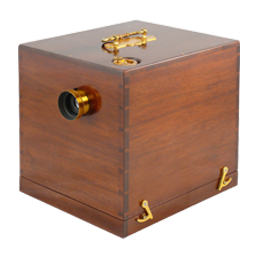
Click here to read about the inventor
|

In 1888 or 1889 William Friese Greene with civil engineer Mortimer Evans designed a ‘machine camera’ and experimental sequences were taken in various locations. The design was further developed and patented on 21 June 1889. “Improved apparatus for taking photographs in rapid series…Our invention has for its object the formation of photographic pictures, and relates chiefly to the production of such pictures as are necessary to illustrate and register the movements of animals, insects or moving objects either taken singly or in masses as may be desired. For this purpose we construct an apparatus by which with a single camera and lens a rapid series of such pictures may be taken and by which a series of fresh photographic film may be substituted for those which have been exposed to the action of light with sufficient rapidity for the desired end”. The sensitized material was driven intermittently by a driving roller worked by a spring and escapement tooth. The driving roller has serrated ends, to give a positive grip on the un-perforated paper. The driving handle was geared to take two exposures with one turn, limiting the exposure rate to four or five pictures a second. This first camera is lost. Details for construction were obtained from contemporary decriptions, engravings and photographs. |

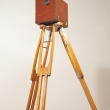
Replica camera and tripod
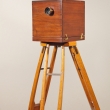
Replica camera and tripod
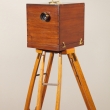
Replica camera and tripod
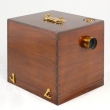
Replica camera
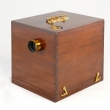
Replica camera
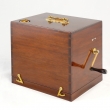
Replica camera, rear view
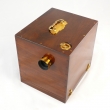
Replica camera
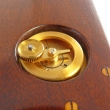
Replica camera
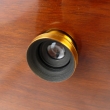
Replica camera lens
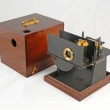
Replica camera, cover removed
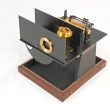
Replica camera, cover removed
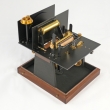
Replica camera, cover removed
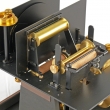
Replica camera, mechanism
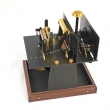
Replica camera, mechanism
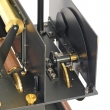
Replica camera, rotating shutter mechanism
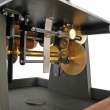
Replica camera, mechanism
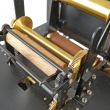
Replica camera, mechanism
|

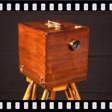 |
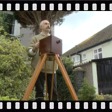 |
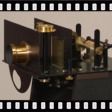 |
|
|
| Replica Camera Mechanism |
Filming the tests |
Cranking the camera |
|
|
|
|
|
|
|
|
|
|
|
|
|